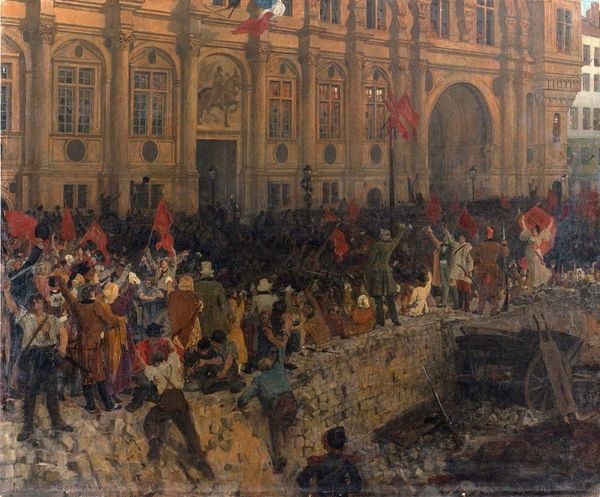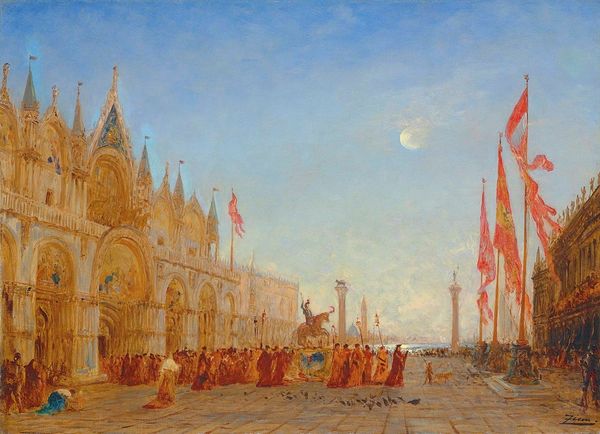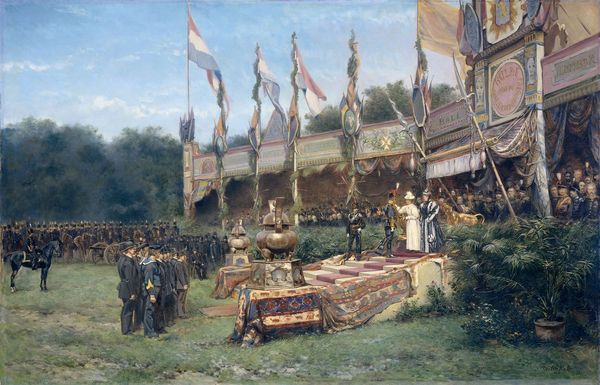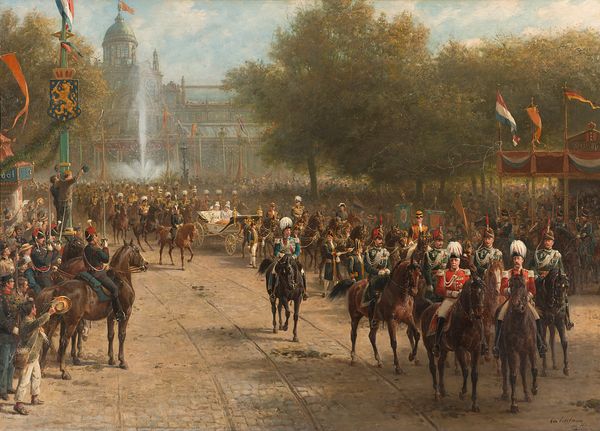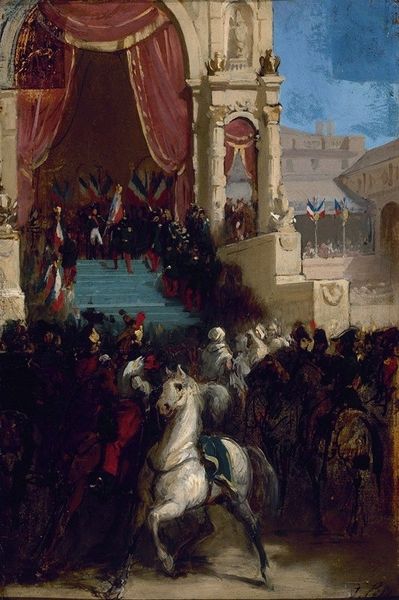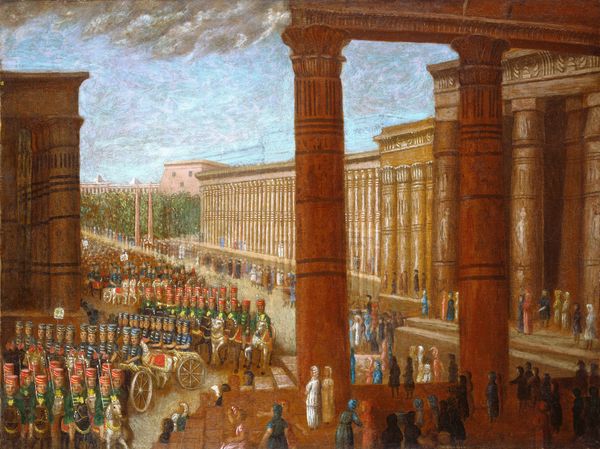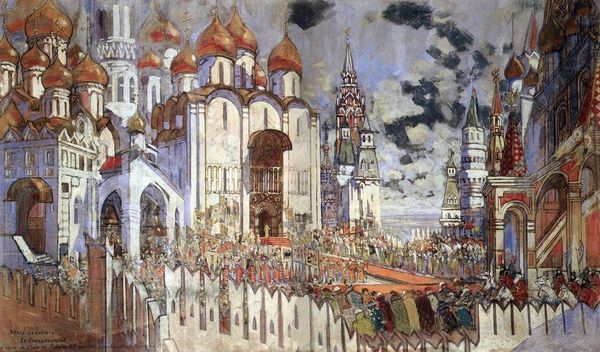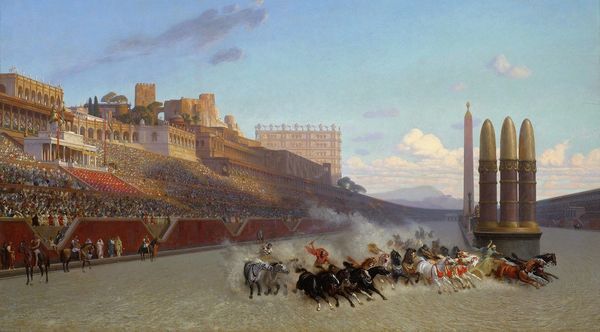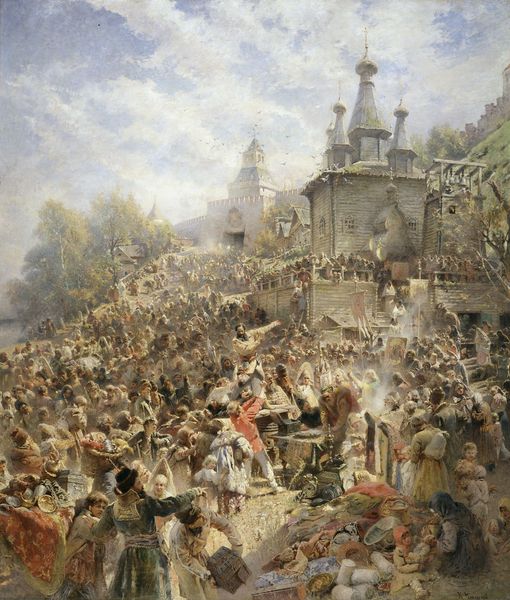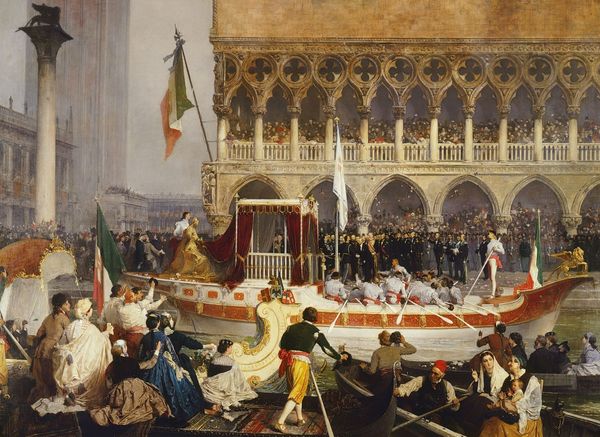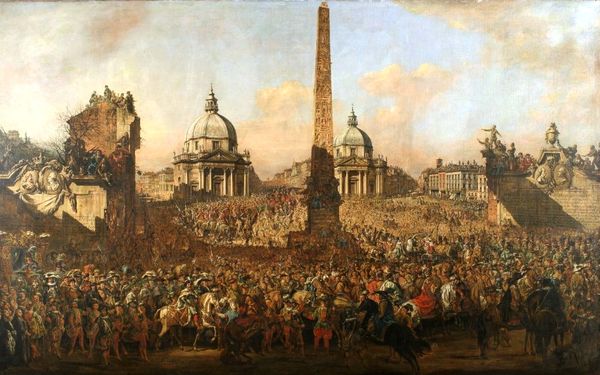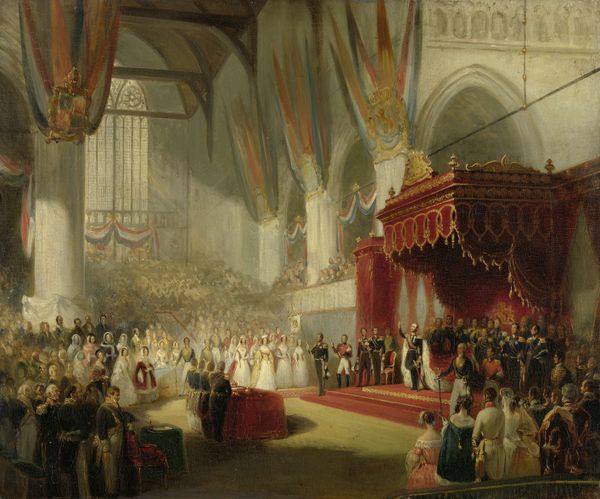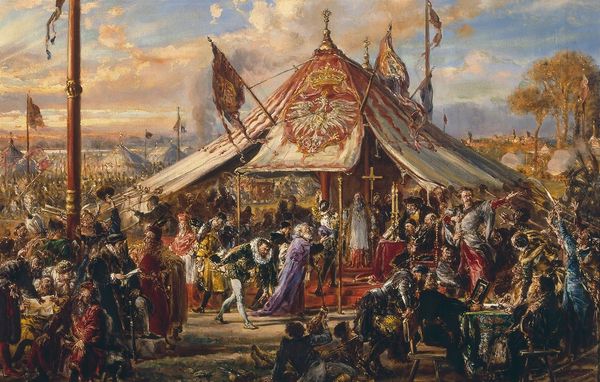
#
glasgow-school
Copyright: Public Domain: Artvee
Curator: Looking at this oil painting titled "Admiralty Arch, 19th July 1919", painted by Sir John Lavery, my initial impression is one of restrained jubilation. There's a formality in the muted color palette, even amidst the clear activity and pageantry of the scene. Editor: Indeed. Lavery captures a specific historical moment here: the Peace Celebrations after World War I. The composition is constructed around the imposing Admiralty Arch, festooned with national flags, a literal gateway into post-war Britain. What does this moment signify to you, in terms of its symbolic weight? Curator: I see the Arch not just as an entrance but as a threshold between eras, one built from stone and aspiration. The flags aren't simply decorations; they’re a visual chorus of allied nations. But look at how he's painted the crowds: as unified masses, yet somehow anonymous, suggesting a collective memory and also perhaps, a collective forgetting of the horrors endured. Editor: The choice to portray the scene from an elevated perspective, almost godlike, it distances the viewer. Lavery’s impressionistic brushstrokes almost abstracts the scene into fields of color. Is this an intentional glossing over of individual experience for a more palatable, unified historical narrative? The painting’s creation was, after all, during a period of national rebuilding and redefinition of British identity on the world stage. Curator: I see your point. But abstraction can also heighten emotion. The lack of detail amplifies the overall sensation of shared experience and the overwhelming scale of the event. I think that sense of removal almost adds to that unified idea of culture. Editor: A masterful use of understatement for profound impact, I must agree. It portrays the weight of history. The painting as artifact becomes part of that continuous and fluctuating memory. Curator: Precisely. A snapshot of collective optimism tempered by the shadows of the past, frozen in time and ready to provoke continued reflections. Editor: Yes. The way Lavery renders the aftermath allows for open reading into society's perception, expectations and, dare I say, also anxieties during that moment of reshaping.
Comments
No comments
Be the first to comment and join the conversation on the ultimate creative platform.
